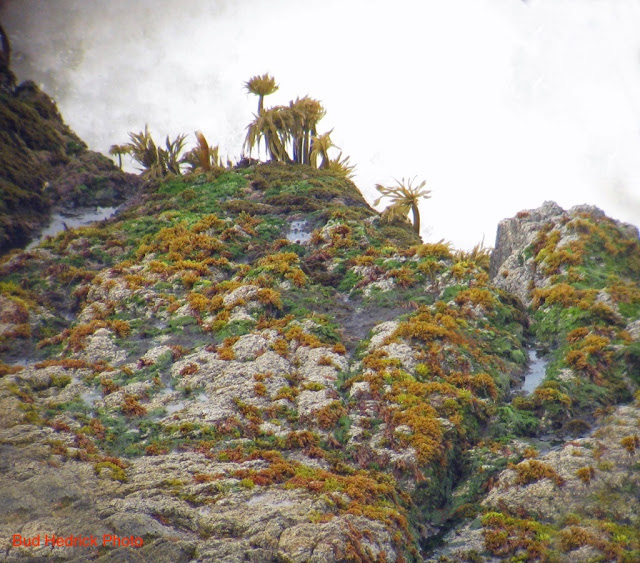In the 1940s, the kelp growing in the
cold waters just off the California shore was so thick it appeared as if a
person could walk on it. It formed a slick and shiny brown canopy that extended
offshore from the shallows of the beach into a hundred feet of water where in
most places the rocky bottom abruptly becomes sand. A formidable webbing of
kelp floated on the surface inhibiting swimming for some. Others put on bone
googles, an import from the Hawaiian Islands and the new Churchill swim-fins
and taking the lead of the South Sea Islanders jumped in, started exploring,
and began diving for fish, lobster and mollusk.
Google Image
Indigenous
natives had eaten and gathered kelp for hundreds of years before the Europeans arrived
and began to collect it. Then, the advent of World
War 1 created a need for pharmaceuticals,
food and industrial applications that kelp supports, and commercial harvesting
began. Large kelp cutter boats began cutting and collecting the floating canopy
of the kelp beds along the coast of Southern California and the Channel
Islands.
Cold water of 40 to 60 degrees Fahrenheit
is required to maintain a health domain for this giant kelp plant, macrocystis pyrifera, commonly known as Pee kelp. And as it is a floating plant, fresh
oxygen is needed and supplied by the current and an active sea. It also requires a rocky
bottom for the root to hold to during large swells and storms.
Standing in the way of kelp’s environmental needs is Global Warming, which in this case is aided by El Nino, sewerage, detergents
and other waste products dumped into the sea along the length of the California coast.
The giant plants provide refuge, food
and asylum for numerous species of fish, mollusks and other creatures. Although
abalone and other small creatures eat the kelp leaf perhaps the biggest enemy is
the pesky Sea Urchin which attacks the root where it holds fast, to the rocks, both
loosening the grasp and killing the plant. Urchins also encroach on the abalone
territory too.
Numerous species of fish, mollusks and other creatures are provided with food and shelter by the kelp forest.

Fronds of gas bladders grow along the
length of the kelp stalk raising the extremities of the plant toward the surface
to flourish in the sunlight.
It is known that Pee Kelp growth under ordinary conditions is up to two feet per day, and the harvesting of the first few feet of kelp, two or three times a year is not a threat to the plant and can be a sustainable industry. Its value is found in many applications such as, pharmaceuticals, cosmetics, paint products, fertilizer for farming, emulsifiers, stabilizers, medicines, cooking products, potash and more.

The loss of kelp along our coast cannot be blamed on commercial harvesting, which in reality has moved on to other domains like Morocco and Scotland since 1989.
Palm Kelp
Palm Kelp is a familiar species of shallow water kelp growing along the rocky edge of the California coast. It has a short thick stalk which allows it to live in the surging shore break. Always found in shallow water close to shore or clinging to an offshore rock with its head exposed, it is another kelp that prefers cold water and at low tide it is often completely high and dry.
The Battlefield
The Guarding Sentinels
Low tide and after the battle is over all the stalks line up for inspection.
Parade Time….No more battle until flood tide.
I hope you have enjoyed the Hidden Beauty of the Kelp Forest and its ecosystem.
For more information about Kelp and the magnificent efforts being made to preserve and create new growth along the California coast follow this link to the "Kelp Lady" site.
And also for more reading, both of my books are available at Amazon Books.
Spain and the Bulls
























